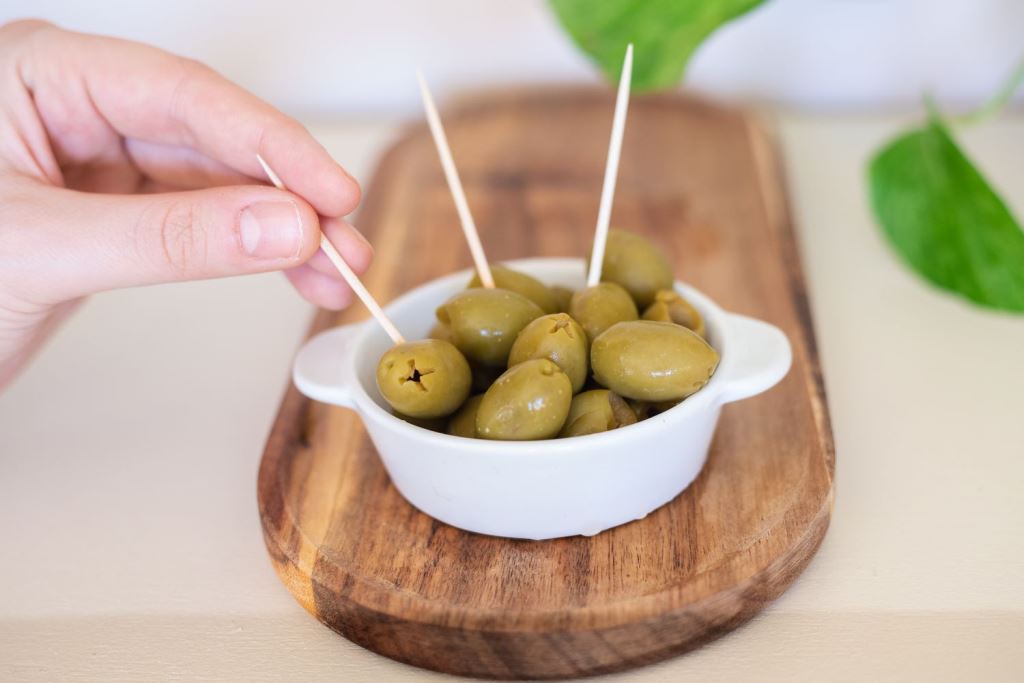Deepen your understanding of mouth-watering sauces with our comprehensive guide that explores the different types of gravy. Whether for a Sunday roast, charming pasta, or an exquisite Thanksgiving dinner, gravy has always been the heartwarming component that ties every dish together. But do you know about the immense diversity of gravies out there waiting to be discovered?
From the classic Brown Gravy to the tangy Tomato Gravy, and the Creamy Country Gravy to the exotic Asian-inspired gravies – the world of gravy is as rich and varied as the communities that developed them. Each type of gravy carries a unique blend of flavors, blending traditions, cultures, and culinary secrets into every spoonful.
In this guide, we will embark on a culinary journey, exploring the diverse range of gravies. We will uncover the history behind each, the dishes they best pair with, and even how to make them!
But this is not just for culinary experts. Our comprehensive guide is designed to inspire both novices and seasoned cooks alike. So prepare your taste buds for a journey of discovery into the indulgent world of gravy!
Discovering the World of Gravy
Gravy is a versatile sauce, usually made from the juices that naturally run from meat and vegetables during cooking. It holds a prominent place in various cuisines around the world and offers a great range of tastes, textures, and flavors which make it a favorite among many food lovers.
Varieties of Gravy
There’s quite a selection of gravy varieties around the world to discover. The form and flavor of gravy vary significantly from one country to another. For example, in America, brown gravy, usually served with roast meat, is a popular choice, especially during Thanksgiving. It is made from the juices of cooked meat, often combined with a roux. Not to mention the renowned white, sausage gravy often served with biscuits for a hearty breakfast.
In the United Kingdom, gravy is a crucial component of the beloved Sunday roast dinners. It’s typically a dark brown sauce, created from the meat’s juices and served warm. Variations may include onion gravy, a popular accompaniment to bangers and mash, and beef gravy, which is often served with Yorkshire pudding.
The Role of Gravy in Cuisine
Gravy plays a crucial role in enhancing flavors in our meals. It adds moisture, binds ingredients together and can turn an ordinary dish into something indulgent and delicious. Plus, it’s a magnificent way to utilize the juices from cooked meats, ensuring that no high-quality flavorings go to waste. Whether you’re enjoying a simple roast chicken, a hearty casserole, or a plate of mashed potatoes, a good gravy can elevate your dish to new culinary heights.
Exploring the wonderful world of gravy isn’t just for chefs or foodies. Anyone who enjoys cooking and eating can benefit from learning about different types of gravy, how they’re made, and the delicious dishes they can complement. So, embark on this gravy journey and discover something delectable at every turn.
The Essential Ingredient: Gravy in World’s Cuisine
Gravy plays an integral part in cuisines all over the world. Whether it’s a traditional Sunday roast that’s been perfected over centuries in the United Kingdom, or the more contemporary poutine in Canada, gravy is the finishing touch that adds a warming and comforting depth of flavor.
The versatility of gravy allows it to adapt to and enhance a plethora of dishes, here are some notable mentions from different cuisines:
- British Cuisine: Gravy is a classic staple of British cuisine. It’s traditionally served with dishes such as roast dinners, Yorkshire puddings, and bangers & mash. Brits are known for their rich and hearty brown gravy made with meat juices.
- American Southern Cuisine: In the American South, a white, peppered gravy, often served over biscuits, is a breakfast favorite. This gravy is usually made with meat drippings, milk, and thickened with flour.
- Canadian Cuisine: Perhaps Canada’s most well-known contribution to the world of gravy, poutine is a combination of fries, cheese curds, and a light chicken-gravy. The rich, savory brown gravy brings the dish together.
- Indian Cuisine: In India, the term gravy is used differently from Western cultures. Here it refers to any dish with a saucy liquid. Indian gravies are known for being fragrant and layered with complex flavors.
- French Cuisine: In French cuisine, gravy is commonly used in dishes, such as coq au vin and boeuf bourguignon. Known as a jus or sauce, it is made from the juices of the meat and various flavorsome ingredients.
Not only does gravy serve as a flavor enhancer in these dishes, but it also aids in digestion. Gravy, especially those made with bone broth, can soothe the digestive tract and promote healthy digestion.
In conclusion, gravy is a necessary component in these cuisines and is the secret behind the soulful and comforting aspect of many dishes across the globe.
Classic Gravy Variations in American Cuisine
American cuisine is known for its hearty and flavorful dishes, and gravies play a crucial role in adding that extra layer of taste. Different regions in the country have their unique take on classic gravies, enhancing every bite with a burst of flavor. Here’s a look at some popular gravy types that have become the cornerstone in the dining traditions of American families.
- Brown gravy: Brown gravy is a meat-based gravy made from the drippings left in the pan after cooking meat. Associated with roast dinners, it is rich in flavor and darker than other meat-based gravies owing to the caramelization of the meat juices and the Maillard reaction.
- Redeye gravy: It is a Southern classic made with ham drippings and black coffee which gives it a distinct flavor. This gravy is a breakfast staple and is typically served over ham, grits, or biscuits.
- Sawmill gravy: Also known as country gravy, sawmill gravy is a white, creamy gravy made with meat drippings (often sausage), flour, and milk. It’s a Southern staple often served with biscuits for breakfast.
- Mushroom gravy: This is a vegetarian-friendly gravy that incorporates mushrooms for their rich, earthy flavor. It is often served over mashed potatoes or veggie burgers.
- Onion gravy: Onion gravy is prepared by slowly cooking onions to caramelize them, then mixing it with stock and wine. It is a popular side dish for meats and potato dishes.
- Turkey gravy: A must-have for Thanksgiving dinners, turkey gravy is made from the drippings of a roast turkey combined with flour or cornstarch and is often seasoned with herbs.
Whether they are savored with a fine roast on holidays or enjoyed with biscuits during a quick breakfast, these gravies are an integral part of traditional American cooking and continue to be cherished by people of all generations.
From Biscuits to Mash: How Gravy Complements Dishes
Gravy, a classic component in various cultures’ cuisines, is more than just a simple sauce. It can significantly enhance the flavor of any dish from biscuits to mashed potatoes. Whether you prefer a traditional brown gravy or something more unique like a white or red gravy, these sauces can fundamentally transform a meal from ordinary to extraordinary.
Let’s start with biscuits and gravy, an iconic Southern American dish. Traditionally, this dish features fluffy, fresh-out-of-the-oven biscuits smothered in white sausage gravy. The rich, creamy gravy provides a satisfying contrast to the light, flaky layers of the biscuit. With each bite, you get a delightful combination of soft breading and savory sauce. It’s a match made in culinary heaven.
Next up, mashed potatoes and gravy. This dish is adored around the world and across different cultures. Topping creamy, soft mashed potatoes with a hearty dollop of gravy (often brown or turkey) creates a spectacular interplay of flavors and textures. The result is a side dish so versatile, it can be paired with anything from roast beef to Thanksgiving turkey.
These are just two examples of how gravy can complement and elevate everyday dishes. In fact, gravy’s earthy, deep flavor profile blends well with everything from starchy foods like rice and pasta, to proteins like steak and poultry. And let’s not forget about gravy’s role in poutine, a Canadian classic where it helps melt cheese curds over French fries.
In conclusion, no matter the meal, there’s likely a type of gravy that can take its flavor to the next level. So go ahead, explore the different types and possibilities – you never know when you might discover your new favourite food pairing.
Making the Perfect Gravy: Key Techniques
The secret to making perfect gravy, be it gravy from scratch, pan gravy, or giblet gravy, lies in mastering some key techniques. Here are the secrets to the perfect gravy:
Perfect Gravy Requires Balance
The first key in making perfect gravy is balance – a balance of flavors. Knowing how to strike the perfect balance is what separates a good gravy from a great one. Salty, sweet, bitter, sour, and umami all come into play here. A tip to remember – if your gravy lacks complexity, try adding a splash of soy sauce or Worcestershire for that added depth. Never forget the depth!
Solving Gravy Mishaps
Another important skill is to know how to fix common gravy problems. Lumpy gravy? Whisk it! If that doesn’t work, strain it. Gravy too thin? Mix cornstarch with cold water and slowly add it to your gravy until it has the desired thickness. Gravy too thick? Slowly add more stock or water, whisking constantly, until the gravy thins out to your liking. Remember, being flexible and adaptable is a key to making perfect gravy.
To summarize, the art of making the perfect gravy lies in balancing flavors, and the ability to correct common gravy mishaps. Keep these tips in mind and you’ll be well on your way to making the perfect gravy your family and friends will love.
Homemade Gravy Recipes for Beginners
Learning to make homemade gravy might feel intimidating for a beginner, but with a little bit of practice and some simple recipes, anyone can master this culinary tool. Here are a few simple recipes to get you started:
Basic Gravy Recipe
For a basic gravy, you’ll need two cups of broth, four tablespoons of flour, four tablespoons of butter, and salt and pepper to taste.
Start by melting the butter in a saucepan over medium heat. Quick whisk in the flour, making sure there are no lumps. Continue to stir as the mixture simmers. Gradually pour in the broth, continuing to whisk as the sauce thickens. Simmer the gravy for about 10 minutes, then season it to taste with salt and pepper.
Chicken Gravy Recipe
To make chicken gravy, follow the same instructions as the basic gravy recipe but start with a well-cooked chicken. After the chicken is cooked, use the pan drippings as the base for your gravy instead of butter. Add a few sprigs of thyme or rosemary for extra flavor.
Mushroom Gravy Recipe
For a delicious vegetarian option, try making mushroom gravy.
In a large skillet, sauté one cup of chopped mushrooms in a little bit of oil until they’re browned and flavorful. Add in two cups of vegetable broth, then slowly whisk in a flour and butter roux (made the same way as in the basic gravy recipe). Simply let it simmer until it thickens. This is a fantastic topping for mashed potatoes or vegetarian roasts.
Remember, the key to making successful homemade gravy is patience and constant stirring. Keep practicing and soon you’ll be able to make flawless gravy every time. Bon appétit!
Exploring Unique Gravy Flavors From Around The Globe
Gravy, a versatile sauce usually made from meat drippings and flour, has captured the hearts of many food enthusiasts worldwide due to its ability to enhance the flavor of various dishes. Let us embark on a global journey to explore diverse and unique gravy flavors that bless the palates of people from different parts of the world.
Britain: Traditional Beef Gravy
Starting off in Britain, the traditional beef gravy is ubiquitous for its role in the quintessential British dish, the roast dinner. This gravy lauds a rich blend of flavors derived from the drippings of roast beef, combined with flour and often a touch of red wine for depth. This thick, savory sauce brings a harmonious convergence of all elements on the British dining table.
India: Masala Gravy
Moving to India, masala gravy bestows a flavorful sensation that’s both aromatic and spicy. The foundation of this gravy is a concoction of various Indian spices including cumin, coriander, turmeric, and garam masala, cooked in a tomato-based sauce. Not only does it give a kick to your taste buds, but it also represents the rich culinary heritage of India.
From the rich, robust flavor of British beef gravy to the spicy and tantalizing taste of Indian masala gravy, we see that the world of gravy extends far beyond the American-style turkey gravy we all know and love. So next time you sit down to a meal, consider spicing things up with an international gravy. Your taste buds will thank you.
Expanding flavor horizons: Unconventional Gravy Recipes
Although the traditionally flavored gravy is a staple at any dinner table, there are many unconventional gravy recipes that you can consider to expand your flavor horizons. These unique recipes bring an unexpected twist to your dishes and can enhance the overall taste. Let’s explore some unexpected gravy types.
1. Miso Gravy
Miso gravy is a Japanese-inspired gravy that incorporates the flavor of fermented soybean paste, which is known for its unique savory taste. This unconventional gravy adds depth to your dishes and pairs excellently with poultry and vegetables.
- 1/4 cup of butter
- 1/4 cup of flour
- 2 cups of vegetable broth
- 4 tablespoons of white miso paste
- Freshly ground pepper to taste
2. Beer Gravy
Beer gravy uses beer as a main ingredient along with broth to create a flavorful gravy that compliments the flavors of meats like pork and beef. The taste of beer enhances the taste of the gravy, giving it a complex and rich flavor that can be a great change from the usual gravy you use.
- 2 tablespoons of seasoned flour
- 1 cup of beef or chicken broth
- 1 cup of beer (your choice)
- Salt and pepper to taste
- 2 cloves of crushed garlic
These unconventional gravy recipes are a testament to the fact that you can experiment with ingredients and flavor profiles to create dishes that are unique and exciting. So, the next time you decide to have a roast or any dish that would typically require gravy, consider trying one of these recipes to make your meal more lively and enjoyable.
FAQ: Gravy Types
How can you prepare a simple white gravy to accompany dishes like chicken-fried steak?
To make a simple white gravy, start by creating a roux with equal parts butter and flour, cooking them together until they form a paste. Gradually whisk in milk or cream, stirring continuously to prevent lumps. Season the mixture with salt and black pepper, and continue cooking it over medium heat until the gravy gets the desired thickness. This kind of gravy is commonly served with dishes like chicken-fried steak or mashed potatoes.
What is the key to making a rich chocolate gravy for a unique dessert option?
Chocolate gravy is a Southern specialty, often served with biscuits. To make this delicious gravy, combine sugar, cocoa powder, and a small amount of flour in a saucepan, slowly mixing in milk to ensure there are no lumps. Bring the mixture to a boil, then lower the heat and stir continuously until it thickens. Adding a piece of butter at the end gives the gravy an extra rich and creamy texture.
Can you make a vegetarian gravy that’s still full of flavor without using traditional beef broth or stock?
Absolutely, vegetarian gravy can be made rich and flavorful without any meat-based products. Substitute beef broth with a robust vegetable broth, adding umami-rich ingredients like soy sauce or sautéed mushrooms. Enhance the flavor with typical gravy herbs and spices like black pepper, garlic, and thyme. A splash of red wine can also deepen the taste profile.
What’s the process to make a classic Southern red-eye gravy, and what dishes is it commonly served with?
Red-eye gravy is a Southern classic made by deglazing a pan with black coffee after frying country ham, leaving in any bits of ham for flavor. The coffee’s bitterness, combined with the savory drippings from the ham, creates a unique taste. This gravy is commonly served over country ham itself, and it often accompanies dishes like grits or biscuits.
How do you prepare a traditional milk gravy to go with fried chicken?
To prepare traditional milk gravy, use the drippings left over from cooking fried chicken. Add flour to the pan drippings and cook until golden brown. Gradually stir in milk, continuing to stir to prevent lumps. Allow the mixture to cook until it thickens to your liking. Season it with salt and black pepper to taste. This creamy gravy pairs wonderfully with fried chicken.
What is the role of chopped onion and garlic in enhancing the flavor of shrimp gravy?
Chopped onion and garlic provide a flavorful base for any gravy. In the case of shrimp gravy, they complement the seafood’s natural flavors. Sauté the onion and garlic until they are soft, before adding in shrimp. This creates a depth of flavor, forming a rich gravy base before adding any additional liquid and thickening agents.
Is it possible to make gravy without the drippings left over from cooking meat, like in the case of hamburger gravy?
Yes, hamburger gravy is one example where you make gravy without traditional drippings. Cook ground beef with onions and garlic, then use the fat released by the beef as the base for your gravy. Add flour to create a roux, and then pour in beef stock or broth, stirring until the gravy thickens. This method still achieves a hearty flavor, typical of meat-based gravies.
How does cornmeal gravy differ from other types of Southern gravy, and what dishes does it complement?
Cornmeal gravy, unique for its texture and taste, is made by substituting cornmeal for flour as the thickening agent. It’s cooked with fat (often bacon grease) and milk, resulting in a thicker, grittier texture than flour-based gravies. This type of gravy pairs well with Southern dishes like biscuits, fried potatoes, or salt pork.
What makes chili gravy suitable for Tex-Mex dishes, and how is it prepared?
Chili gravy is perfect for Tex-Mex because of its bold, spicy flavor. It’s made by creating a roux with oil and flour, then adding a blend of spices, including chili powder, cumin, and garlic powder. Gradually whisk in chicken stock to prevent lumps, cooking until the gravy thickens. It’s ideal for dishes like enchiladas, burritos, and tamales.
For those who prefer a less meat-centric option, how can one prepare a flavorful vegetable gravy?
Vegetable gravy offers a lighter, yet still savory, option. Start by sautéing a mix of vegetables like onions, celery, and carrots. Add flour to create a roux, then slowly incorporate vegetable broth, stirring constantly. Enhance the flavor with herbs like rosemary or thyme and season with salt and black pepper. This gravy goes well with mashed potatoes, vegetarian meat substitutes, and roasted vegetables.
What are the basic steps to creating a traditional cream gravy, and what are its common pairings in meals?
To create a classic cream gravy, start with melting butter in a pan, then whisking in flour until a smooth paste forms. Gradually add milk or cream, whisking continuously to prevent lumps. Bring the mixture to a simmer until it thickens, and season with salt and pepper. Cream gravy typically accompanies comfort foods such as biscuits, chicken-fried steak, mashed potatoes, or turkey during Thanksgiving.
How does bouillon enhance the flavor profile of homemade gravy?
Bouillon, whether in cube or liquid form, enhances gravy by adding a depth of savory flavor. When dissolved in water, it creates a quick, flavorful broth that can be used as the liquid base for your gravy, introducing more complex, meaty notes that enrich the sauce’s overall taste, especially when additional seasonings are minimal.
Can you describe how to make an egg gravy and what dishes it’s usually served with?
Egg gravy is a unique yet traditional sauce made by beginning with a standard roux of butter and flour, then slowly incorporating milk or broth for a creamy base. Hard-boiled eggs are finely chopped and added to the mixture, contributing a distinctive texture and richness. This type of gravy is often served over toast, biscuits, or country ham, providing a hearty breakfast or a comforting dinner dish.
How does Worcestershire sauce influence the taste of homemade gravies, and in what gravy is it most effective?
Worcestershire sauce adds a burst of flavor due to its complex blend of vinegar, molasses, garlic, spices, and anchovies. Just a few dashes can profoundly transform gravy by providing umami depth and a slight tang. It’s particularly effective in enhancing beef-based gravies or sauces, such as those used in roast beef or steak dishes.
What is the traditional method for preparing ham gravy, and how does it complement a meal?
Ham gravy is made by utilizing the drippings from a cooked ham, combining them with flour to form a roux, and then gradually adding in milk or water until the desired consistency is achieved. The salty, savory flavor of the ham infuses the gravy, making it a perfect complement to the rich taste of the ham itself, as well as other traditional side dishes like mashed potatoes or green beans.
Considering there are many different types of gravy, how does one decide what gravy to prepare for a meal?
Choosing among the many different types of gravy comes down to the main dish’s flavor profile and the accompanying side dishes. For poultry like turkey or chicken, a lighter, broth-based gravy might be preferable. In contrast, beef dishes pair well with a richer, darker gravy that has robust flavors. Vegetable-based gravies can be ideal for vegetarian meals.
How is instant gravy different from homemade gravy, and when might it be more convenient to use?
Instant gravy comes in powder or cube form and is reconstituted by adding water or milk. It offers a quick, convenient option, although it lacks the freshness and full flavor profile of homemade gravy. It’s handy for situations where time or resources are limited, or when you need a quick sauce for a meal without the available pan drippings typically required for traditional gravy.
Can you describe how to make a traditional salt pork and milk gravy?
Salt pork and milk gravy is a hearty, flavorful sauce made by rendering down salt pork until crisp. Remove the pork, and in the remaining fat, make a roux with flour, then whisk in milk until the gravy is smooth and thick. This gravy pairs wonderfully with biscuits, potatoes, or any dish that benefits from its rich, savory character.
In the context of versatility, what types of dishes does redeye ham gravy typically accompany?
Redeye ham gravy is another versatile option, with a distinctive flavor from the addition of coffee. It’s most often associated with Southern cuisine, drizzled over country ham and biscuits. However, its robust taste means it can also accompany a variety of dishes, including chicken, pork chops, or even as a unique sauce for steak.
What are the steps to creating a rich and flavorful roast beef gravy?
To make a rich roast beef gravy, start by collecting the drippings from your roasted beef. Add these to a saucepan with a bit of flour, cooking until it turns a golden brown color. Slowly mix in beef stock or broth, continuously stirring. Add seasonings such as Worcestershire sauce, salt, and pepper, and simmer until it thickens. This gravy is also the perfect addition to enhance the flavors of sliced roast beef, mashed potatoes, or Yorkshire puddings.




